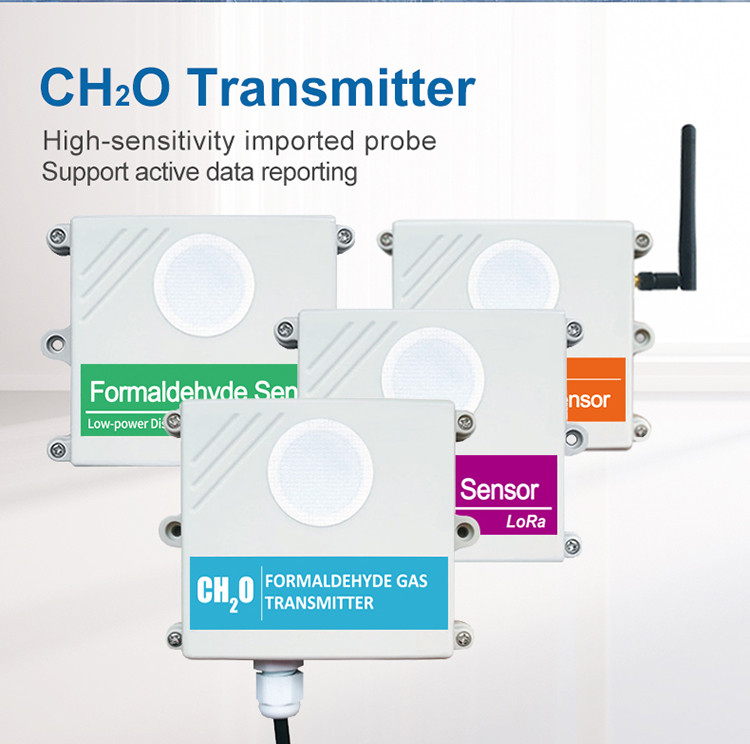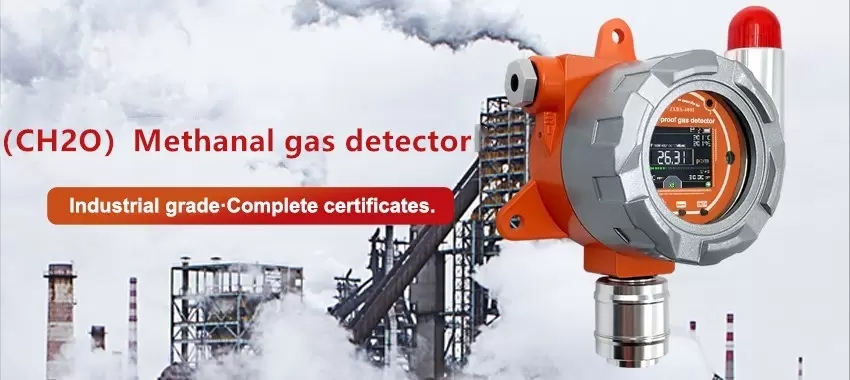Background:
Formaldehyde is volatile at high temperature and soluble in water. Both the melting and boiling points are below zero, with a pungent smell. Its production process is simple and it is a common chemical product. It is a travel product under methanol, about 30% of the world’s methanol is used to produce formaldehyde. The annual output is about 25 million tons. Formaldehyde solution is an aqueous solution of low concentration.
Because of its excellent properties, formaldehyde is widely used in industrial machinery, automobile manufacturing, electronic appliances and many other industrial fields. With the development of technology, the performance of formaldehyde is further improved. Domestic and foreign enterprises are actively investing in this aspect of research, the future of the whole formaldehyde industry will have a great space for development. In the development of the Internet of Things, all kinds of formaldehyde sensors have attracted people’s attention.
Common areas of formaldehyde:
Formaldehyde is a strong fungicide, widely used in hospitals and scientific research departments to preserve specimens. In the production of clothing fabric, in order to achieve anti-wrinkle, anti-shrinkage, flame retardant and other functions. Or in order to maintain the durability of printing and dyeing, or to improve the feel, it is necessary to add formaldehyde in the additives. Some inferior water-based interior wall coatings and white latex also use formaldehyde as a preservative. Formaldehyde is widely used in industrial production. It is used to make synthetic resins, paints, plastics and man-made fibres. It is also an important raw material for adhesives used in the wood-based panel industry.
Hazards of formaldehyde:
Although formaldehyde is of great help to our life, it is also harmful to our health. The main harm of formaldehyde is irritation to the skin and mucous membrane. Formaldehyde is a toxic substance in raw pulp that binds to proteins. High concentrations of inhalation can cause severe respiratory irritation and edema, eye irritation and headache. In addition, direct skin contact with formaldehyde can cause atopic dermatitis, pigmentation and necrosis. Inhaling high concentration of formaldehyde can induce bronchial asthma. Therefore, for our health, the management of formaldehyde must not be relaxed. In the environment where there may be formaldehyde, formaldehyde sensor detector can be used to detect formaldehyde concentration.

Fixed HCHO Gas transmitter:
Fixed HCHO gas transmitter independently developed by JINGxun Unclog can monitor formaldehyde concentration in real time. High sensitivity, accurate measurement. Strong anti-interference ability, stable performance and other characteristics. Good linearity, easy installation, long transmission distance. Factory direct sales, support customization. A variety of output methods can better meet the specific needs of different customers.

Explosion-proof formaldehyde sensor:
Fixed gas detector, stable performance, sensitive and reliable. Adopt high precision LIQUID crystal display, explosion-proof enclosure, diffused or pumped. The formaldehyde detector has the characteristics of flexible use and simple operation. Formaldehyde detector is used in various gas leakage places, such as: city gas, petroleum, chemical, pharmaceutical, steel, special industrial plants and other fields. Formaldehyde detector explosion-proof grade is CT6. With hd LCD color screen display, industrial high definition interface, 320*240 resolution intuitive display. Multi-machine alarm controller selection, abundant optional external control ports. Easy to use, sound and light alarm. Waterproof, dustproof, explosion-proof, anti-condensation. The casing is made of die-cast aluminum technology and IP65 waterproof. A variety of signal output can better meet the needs of different customers.